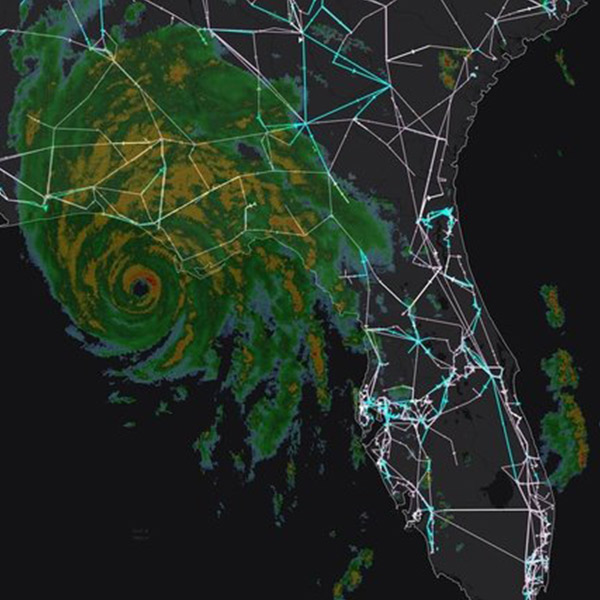By Robert Mullin
SEATTLE — All systems are go as the Western Electricity Coordinating Council enters the final stretch of a yearlong sprint to ensure its dozens of balancing authorities safely integrate into new reliability coordinators ahead of Peak Reliability’s dissolution in early December, the group’s board heard Wednesday.
The Western Interconnection’s transition from two RCs to four is on schedule and proceeding smoothly, according to Branden Sudduth, WECC vice president of reliability planning and performance analysis.
“I am amazed at the amount of effort that people across the interconnection have put into this transition, making it successful, and I’m pleased to report that as of today, we are on schedule to attain all the objectives that we set out to attain,” Sudduth told board members at their quarterly meeting, held in conjunction with WECC’s broader annual gathering.
After Peak announced in July 2018 that it would wind down operations by the end of this year, CAISO and SPP scrambled to pick up its RC customers throughout the West.
CAISO’s RC West — which went live as California’s RC in July — will ultimately take on nearly three-quarters of the West’s load, followed by SPP at about 14%. (See CAISO Finalizes 32 RC Agreements.) BC Hydro began serving as its own RC on Sept. 2, Sudduth noted.
Alberta Electric System Operator has traditionally functioned as its own RC and will continue to do so.
Sudduth said that Gridforce Energy Management — a fifth prospective RC — will delay its certification and instead contract with RC West to serve its generation-only balancing areas for 17 months. As recently as May, Gridforce said it was still targeting a Dec. 3 go-live date, while acknowledging being in “catchup mode.” (See New RCs Tell WECC Transition on Schedule.)
WECC’s certification team for RC West’s future footprint outside California conducted a site visit at CAISO in late July. RC West began shadow operations with Peak for that expanded area on Sept. 4. WECC’s SPP team visited that RC in mid-August and has scheduled a follow-up visit for Oct. 9. SPP RC staff will shadow Peak in October and November and take over its new inland West territories on Dec. 3.
“A lot has happened on the certification and shadow operations front over the last couple of months, and there’s still a lot left to do, but everything is on schedule,” Sudduth said.
Among the tasks still left to wrap up: the completion of efforts to satisfy NERC reliability standard IRO-006-2, which requires a “common interconnection-wide modeling and monitoring methodology” for use in operational planning and real-time assessments, including facility ratings, thermal limits and steady-state voltage limits. NERC approved the standard to ensure uniformity among RCs across the West in the wake of Peak’s closure. (See “Trustees OK WECC Variance; Questions on Gen-only RC, Calif.-Ariz. Seam,” NERC Standards News Briefs: May 8-9, 2019.)
Also, 22 out of 60 WECC entities have still yet to sign on to the Western Interconnection Data Sharing Agreement (WIDSA), which was finalized in July, Sudduth said. The WIDSA will replace the Peak-administered Universal Data Sharing Agreement (UDSA), which provides a “consent-based” platform for sharing reliability-related information in the region.
On a related front, WECC is leading the transition from the Peak EHV Data Sharing Pool — the system used to share grid reliability data under the UDSA — to the Western Data Sharing Pool.
“I don’t know all the technical details of what this means, but essentially what we’re doing is going from an organization like Peak being the central repository of information to developing a new way for the RCs to communicate with each other and directly with their entities — and we’re hoping to transfer to this by Oct. 1,” Sudduth said.
WECC is also guiding the hand-off of Peak’s WECC Interchange Tool (which facilitates interchange between BAs) and Enhanced Curtailment Calculator (used for congestion management), Sudduth said.
He noted that WECC has rolled out a new RC messaging system. “I’ve been getting tons of emails from the new RCs, so it’s good to see that happening,” he said.
‘Reliability is Still Our Mission’
Making an impromptu appearance before the board, Peak CEO Marie Jordan assured WECC stakeholders that the organization’s impending shutdown won’t hold any surprises.
“We can still measure operations, which I think is really important with the magnitude of what we do … that we have this ability to measure it every day to ensure that we don’t have hiccups — because I think that would be very difficult in this transition period,” Jordan said.
She said Peak is focused on ensuring that staff use the shadow operations periods to transfer knowledge to the new RCs “because reliability still is our mission, and it’s been our first foot forward in all our conversations with our employees and how we’ve worked through the transition.”
As for Peak’s financial condition?
“I’ll say that’s actually in good shape,” Jordan said. She said learning how to close a not-for-profit has “been an interesting journey.”
“But the good news is we’ve done very well on the financial front, and we intend to finish and close that way.”
Jordan said Peak has not experienced any “unplanned attrition” in the past three months and that it plans to release its remaining staff on Dec. 13, just 10 days after handing off oversight to SPP. The company will then move to a model in which a board-appointed trustee will handle closing activities in 2020 as well as manage Peak’s data — and data requests — for the next five years.
“We’ve worked with all our vendors on the contracts … making sure that Peak is released from the liability and all the pieces of the contract with OATI — and all those other types of contracts, making sure there’s a clean start with the new entity,” Jordan said.
“I think we’re wrapping up well.”






